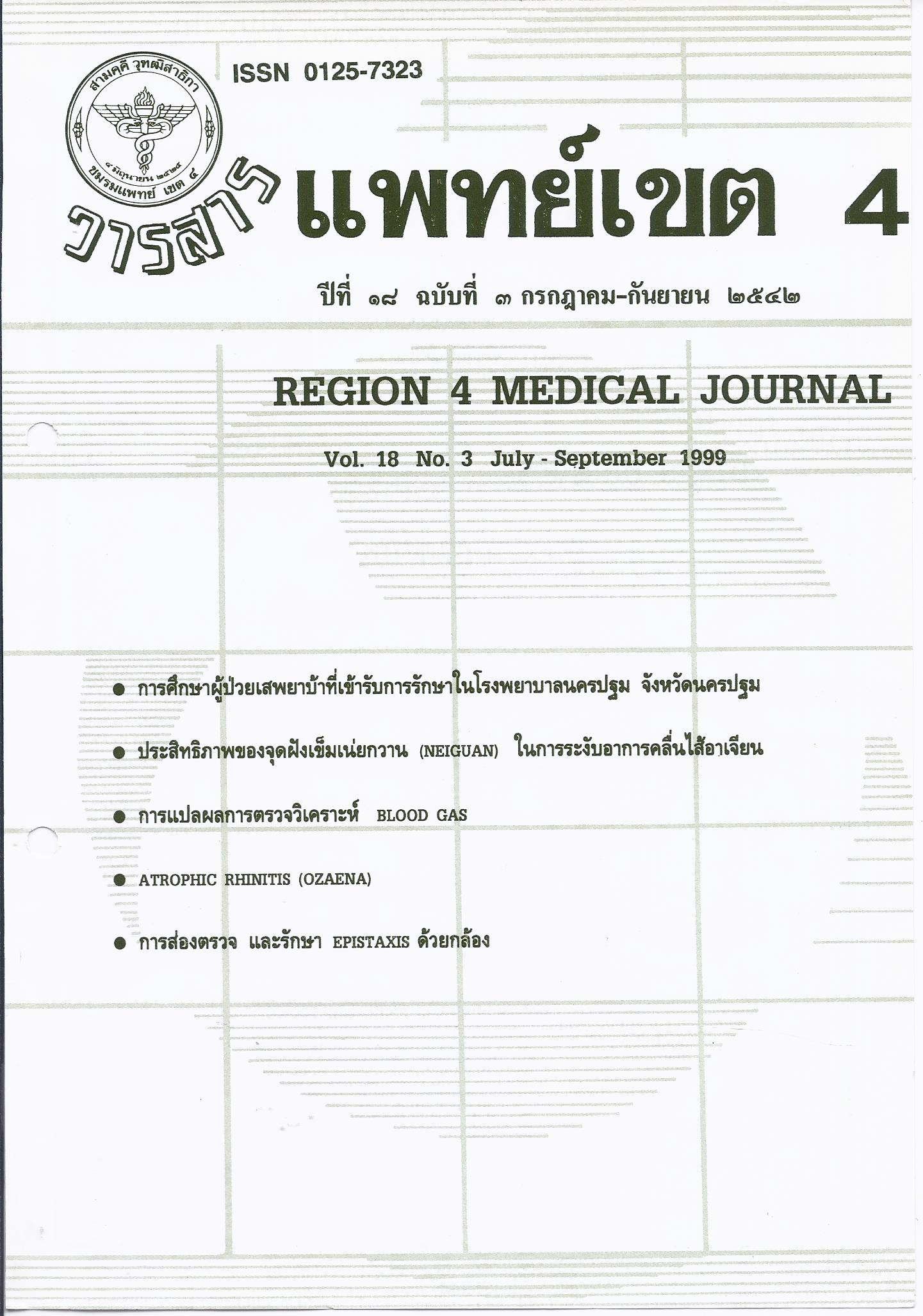ประสิทธิภาพของเทอร์โมมิเตอร์ชนิดอินฟราเรดวัดทางหูและชนิดอิเล็กทรอนิกส์วัดทางรักแร้ เปรียบเทียบกับชนิดชนิดปรอทแก้ววัดทางทวารหนักในเด็กไทย
บทคัดย่อ
This prospective observational study assessed the accuracy and factors that influenced the infrared tympanic and digital electronic axillary thermometers compared with glass mercury rectal thermometers in 200 Thai children aged 1 day - 48 months in Nakhonpathom Hospital. Temperature measurements were obtained simultaneously at three body sites with infrared tympanic (rectal mode), digital electronic axillary and glass-mercury rectal thermometers three times for each thermometer and determined averaged values. The mean rectal temperature (38.00 ± 0.91°C) was higher than the mean tympanic (37.77 ± 0.95°C) and the mean axillary temperature (37.71 ± 0.86°C) significantly (p < 0.05). Rectal temperatures showed excellent correlation with both tympanic and axillary temperatures (r = 0.93 and 0.90, respectively, p < 0.001). In detecting fever, tympanic thermometer was 72% sensitive, 98% specific and 85.5% accurate. Axillary thermometer was 68% sensitive, 99% specific and 84% accurate. Quantity of cerumen and acute otitis media had no effect on the accuracy of the tympanic thermometer. Range of rectal temperature, age group and ambient temperature influenced on the accuracy of digital axillary thermometer more than tympanic thermometer. Tympanic thermometer had slightly better performance than axillary thermometer. Because of low sensitivity, both thermometers should not be substituted for glass-mercury rectal thermometer in newborn infants and young children now.
ดาวน์โหลด
เผยแพร่แล้ว
รูปแบบการอ้างอิง
ฉบับ
ประเภทบทความ
สัญญาอนุญาต
ลิขสิทธิ์บทความเป็นของผู้เขียนบทความ แต่หากผลงานของท่านได้รับการพิจารณาตีพิมพ์ลงวารสารแพทย์เขต 4-5 จะคงไว้ซึ่งสิทธิ์ในการตีพิมพ์ครั้งแรกด้วยเหตุที่บทความจะปรากฎในวารสารที่เข้าถึงได้ จึงอนุญาตให้นำบทความในวารสารไปใช้ประโยชน์ได้ในเชิงวิชาการโดยจำเป็นต้องมีการอ้างอิงถึงชื่อวารสารอย่างถูกต้อง แต่ไม่อนุญาตให้นำไปใช้ในเชิงพาณิชย์




